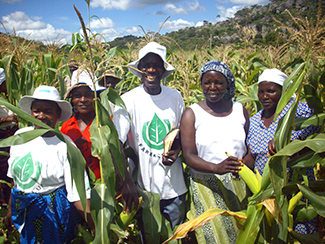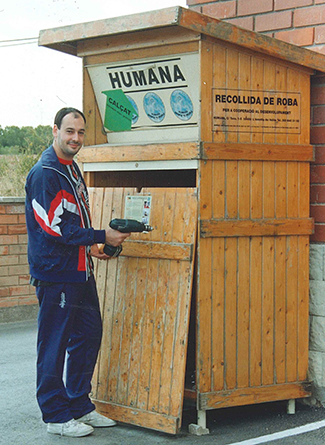consent_cookie
Duración: 1 year
Stores the user's cookie consent state
30-07-2017
Since its birth, on July 30, 1987, Humana is, above all, the sum of the effort of a team that works every day in favor of protecting the environment and improving the living conditions of other people.
The origin and objectives
Starting from the struggle against Apartheid and the knowledge of the reality of Sub-Saharan Africa acquired through its travels in different countries of the area, a group of people with a common desire felt at the beginning of the seventies the basis of what today Are the different organizations that are part of Humana People to People.
In 1977 the first of these organizations was created in Denmark UFF. For the next ten years, the Humana of Norway, Sweden (both in 1979), Zimbabwe (1980), Guinea-Bissau (1981), Mozambique (1982), Zambia (1985), Austria, Angola Finland (1987). On July 30 of that same year the Asociación Humana was born officially through its registration in the Barcelona registry.
In September 1987 the first containers were placed on the street, a space was rented to sort the clothes and in October it opened the first store, in Santa Coloma de Gramenet, near Barcelona. During the first years the containers are made of wood. Today, the collection is carried out with metal containers of last generation that guarantee high levels of usability and safety, while it is used from specific management software for the collection to volumetric sensors for the containers.
Clothing is the fraction that inaugurates the system of selective collection of urban solid waste, behind the glass. The society's response to Humana's proposal - giving a second life to clothes for a social purpose - is, from the beginning, very good. It should be borne in mind that in Spain there was a long tradition of extending life to garments: people are accustomed to donating it to relatives or friends, so the appearance of the first containers dedicated to the selective collection of textiles is a new Way to promote reuse, with the added value of having a social purpose.
In 2002 the transformation of the Human Association into the current Fundación Pueblo para Pueblo begins in a process that culminates in 2010. The legal figure of Foundation fits better with the nature of the organization since, for example, it enhances the protection of the environment Among its aims.
Being faithful since 1987 to our mission we have grown year by year, knowing that there is always scope for further improvement. We can say, without a doubt, that today the organization has reached maturity as a Foundation, backed by solid values ??and a high level of professionalism and commitment to society.
Some key dates in these 30 years
1987
1988
1995
1996
1997
1998
1999
2000
2001
2007
2009
2010
2011
2012
2014
2015
2016


